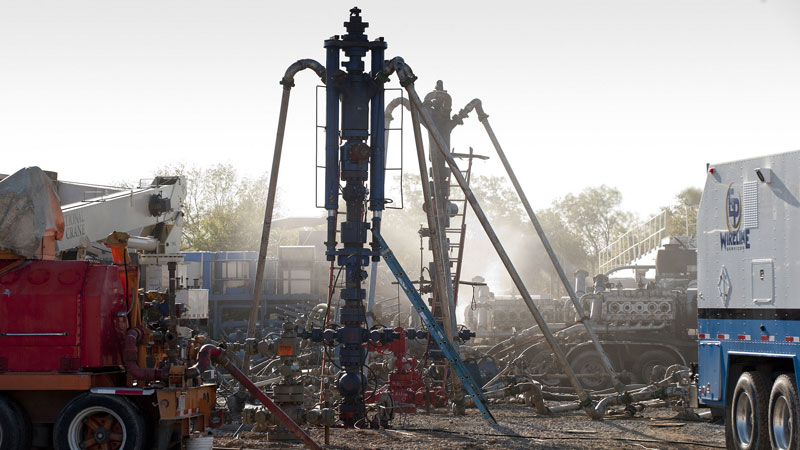A leading authority on the effects of methane in the atmosphere has called for a new drive to cut gas leaks from pipelines and wells.
Euan Nisbet, professor of Earth sciences at Royal Holloway, University of London, says that ever more sensitive detection equipment using global satellite positioning systems has made it relatively cheap and quick to check where leaks are coming from.
“Methane is an obvious target to help with climate change and it is easiest to stop the emissions coming from fossil fuels,” he says. “This is the low-hanging fruit.”
Weekly briefing: Sign up for your essential climate politics update
Nisbet and a team that includes scientists from the US National Oceanic and Atmospheric Administration (NASA) and Victoria University in New Zealand have just published new research showing that recent rises in methane are coming largely from biological sources such as swamp gas, rice fields and even the flatulence of cattle.
The study, first outlined in the American Geophysical Union’s journal Global Biogeochemical Cycles, has been seen by some in the fossil fuel industry as evidence that they have been unfairly scapegoated.
They believe that shale drilling in particular has been wrongly blamed by environmentalists for growing methane levels.
Methane is considered to be 25 times as dangerous to the atmosphere over a century as carbon dioxide – but more than 80 times as dangerous over just 20 years. And since the beginning of the industrial revolution, methane concentrations are believed to have more than doubled, while CO2 has risen by a more modest 40%.
“There is a very large global gas industry and we should be able to cut these leaks”
Nisbet says there is little doubt that significant growth in methane emissions through most of the 20th century was largely the result of leaks from the gas and coal industry.
There was a brief break in the upward trajectory in the first years after 2000, but growth began again in 2007 and then doubled in the 12 months of 2014.
Many scientists, as well as anti-fossil fuel campaigners, did presume that the growth in US shale drilling and other hydrocarbon activities was causing most of the problems.
Nisbet now believes these assumptions must be rethought. He says: “Our results go against conventional thinking that the recent increase in atmospheric methane must be caused by increased emissions from natural gas, oil, and coal production.
“Our analysis of methane’s isotopic composition clearly points to increased emissions from microbial sources, such as wetlands or agriculture.”
Significant gas leaks
But Nisbet still thinks it would be misguided to stop putting effort into halting leaks from the gas industry.
“It is deeply troubling that there seems to be strong growth in methane levels in the Amazon Basin and the tropics,” he says. “It is likely to be the result of changing weather patterns due to global warming, which are slowing the natural processes that remove methane from the atmosphere.
“But it is not easy to counter these changes, compared with the relatively low cost of removing gas leaks from pipelines. There is a very large global gas industry, and we should be able to cut these leaks.”
Nisbet is also concerned that there has been more and more evidence that methane levels from oil and gas operations have been repeatedly underestimated. He, and others, believe that the UN climate change negotiators may be working with outdated numbers that underestimate the amount of fossil fuel-related methane in the atmosphere.
There have also been repeated warnings about the dangers of future methane leaks in the Arctic tundra as global warming causes soils to thaw in the far north.
Meanwhile, research published last month suggests there may be relatively easy ways of reducing greenhouse gases in agriculture. It claimed that directly seeding rice into fields rather than transplanting it into flooded paddies would dramatically reduce methane emissions.
This article was produced by Climate News Network
